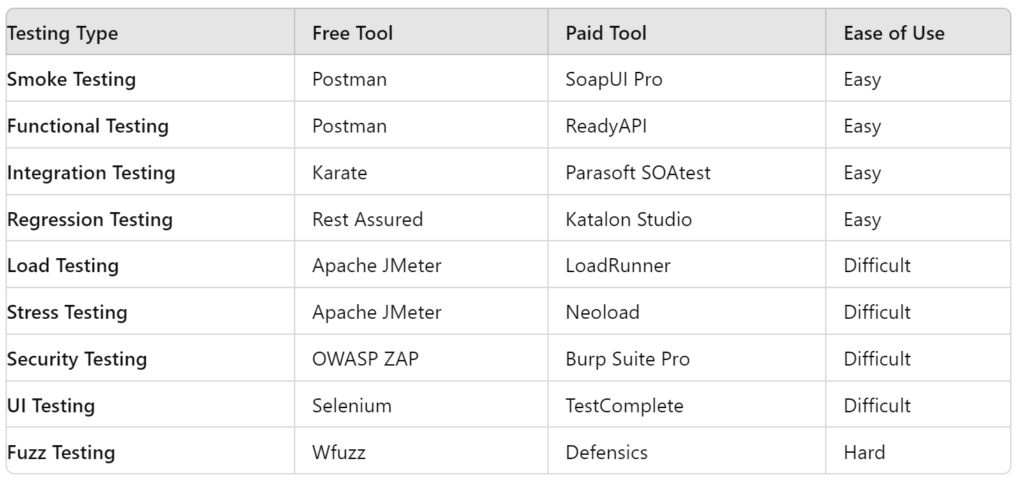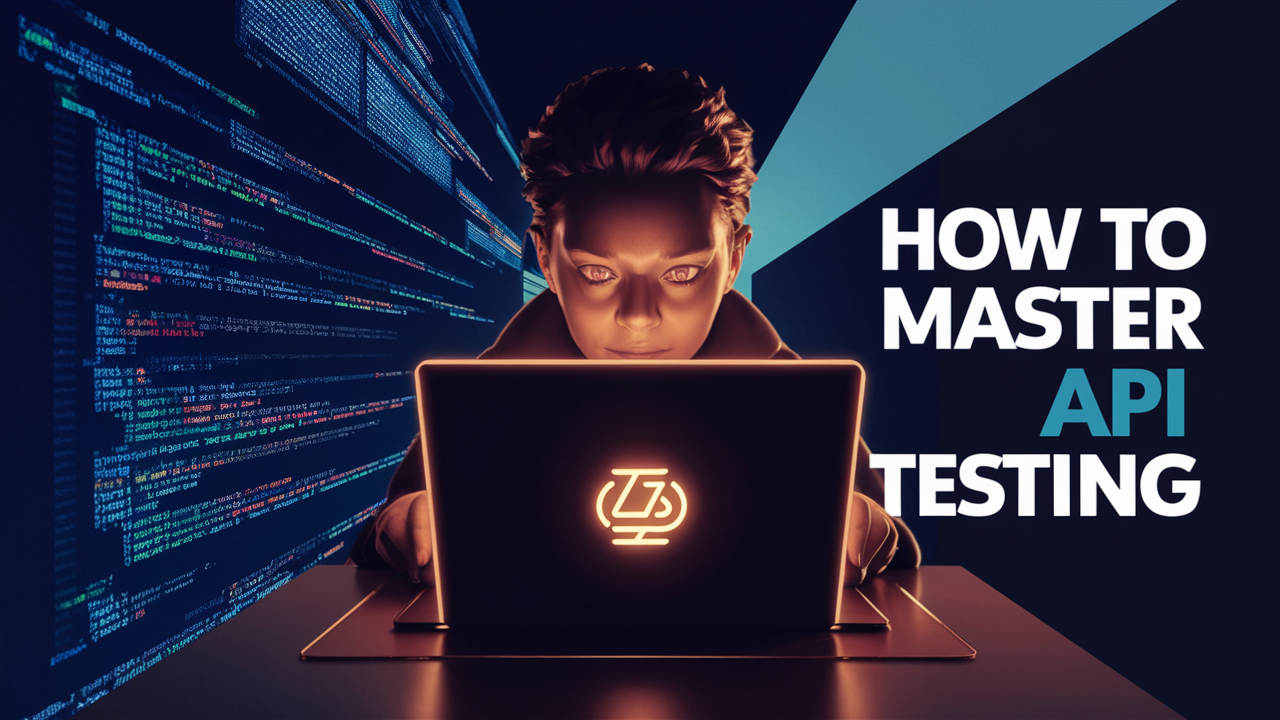In today’s fast-paced software development environment, APIs (Application Programming Interfaces) have become the backbone of modern applications. They enable communication between different software components, making them a crucial element in web, mobile, and cloud-based applications. As APIs play an integral role in the functionality of software, mastering API testing is essential for ensuring the reliability, security, and performance of your applications.
But how do you ensure your APIs are functioning as expected, especially when they must handle millions of requests, integrate with multiple services, and remain secure against potential threats? The answer lies in thorough API testing. In this guide, we’ll delve into 9 essential types of API testing, each serving a unique purpose in validating and securing your APIs. We’ll also provide real industry examples to illustrate how these tests are applied in practice.
Whether you’re a seasoned developer, a QA engineer, or someone new to the world of API testing, this guide will help you understand and master the testing strategies necessary to build robust and reliable APIs.
1. Smoke Testing: Validating the Basics
Smoke testing is the first step in the testing process. It’s a preliminary test that ensures the basic functionalities of your API are working as expected before you dive into more detailed testing
What Is Smoke Testing?
Definition: Smoke testing is a quick and straightforward test designed to check if the APIs are functioning correctly after development. It validates that the most critical features work and that nothing is fundamentally broken.
Purpose: The goal is to catch major issues early in the development cycle, allowing for quick fixes before more comprehensive testing begins.
Real Industry Example: Smoke Testing in a Payment Gateway API
Imagine a company like Stripe, which provides payment processing services via APIs. After a new version of their payment API is deployed, smoke testing might involve sending a basic payment request to ensure that transactions can be processed successfully. If the API fails to process the payment, the issue is caught immediately, preventing further complications in subsequent testing phases.
Key Takeaway:
Smoke testing is your first line of defense against critical API failures. It helps ensure that your API is ready for more in-depth testing.
2. Functional Testing: Ensuring the API Does What It Should
Functional testing verifies that the API performs according to the functional specifications, ensuring it delivers the expected results for various inputs.
What Is Functional Testing?
Definition: Functional testing involves creating test cases based on the API’s functional requirements. It tests each function of the API by providing appropriate input and verifying the output against the expected results.
Purpose: The aim is to ensure that the API’s features work as intended, covering all possible scenarios, including edge cases.
Real Industry Example: Functional Testing in Social Media APIs
Consider a social media platform like Twitter, which offers APIs for posting tweets, retrieving timelines, and more. Functional testing of these APIs might include scenarios such as posting a tweet, retrieving a user’s timeline, and handling character limits. Testers would verify that each API endpoint returns the correct data and handles inputs as specified in the documentation.
Key Takeaway:
Functional testing is essential for validating the correctness of your API’s features. It ensures that your API behaves as expected in all specified scenarios.
3. Integration Testing: Testing API Interactions
Integration testing focuses on the interactions between multiple APIs or between your API and other software components, ensuring they work together seamlessly.
What Is Integration Testing?
Definition: Integration testing combines different API calls and software modules to test their interactions. It validates that these components work together correctly and that data flows seamlessly between them.
Purpose: The goal is to identify issues that might arise when APIs or services interact, such as data inconsistencies, incorrect API calls, or communication errors.
Real Industry Example: Integration Testing in E-commerce Platforms
For an e-commerce platform like Amazon, integration testing could involve testing the interaction between the payment API, the inventory management API, and the order processing system. The test would ensure that when a customer places an order, the payment is processed, the inventory is updated, and the order is logged correctly in the system.
Key Takeaway:
Integration testing is crucial for verifying cross-component interactions and ensuring that your APIs work together smoothly in a real-world environment.

4. Regression Testing: Preventing New Bugs from Breaking Existing Functionality
Regression testing is performed after updates or bug fixes to ensure that new changes don’t negatively impact existing functionalities.
What Is Regression Testing?
Definition: Regression testing involves re-running previously conducted tests to confirm that recent changes haven’t introduced new bugs or broken existing functionality.
Purpose: The goal is to maintain the integrity of the API after changes, ensuring that everything that worked before still works as expected.
Real Industry Example: Regression Testing in Banking APIs
Banks like Chase or Wells Fargo regularly update their online banking APIs with new features or security patches. Regression testing in this context might involve re-testing all existing API functionalities, such as balance inquiries, fund transfers, and transaction history retrievals, to ensure that these features still work after the update.
Key Takeaway:
Regression testing is essential for maintaining stability in your API, especially after implementing updates or fixes.
5. Load Testing: Ensuring the API Can Handle High Traffic
Load testing measures how well your API performs under various levels of demand, from normal usage to heavy traffic, ensuring it can handle expected loads without degrading performance.
What Is Load Testing?
Definition: Load testing simulates a specific number of users or transactions to see how the API performs under typical and peak conditions. It measures response times, throughput, and stability.
Purpose: The aim is to identify the upper limits of your API’s capacity and determine how it behaves under high load conditions.
Real Industry Example: Load Testing in Streaming Services
Companies like Netflix need to ensure that their APIs can handle millions of concurrent users streaming content simultaneously. Load testing would simulate this high traffic scenario, assessing whether the APIs can handle the load without causing delays or crashes.
Key Takeaway:
Load testing is critical for understanding your API’s performance limits and ensuring it can handle the demands of real-world usage.
6. Stress Testing: Testing API Limits Under Extreme Conditions
Lorem ipsum dolor sit amet, consectetur adipiscing elit. Ut elit tellus, luctus nec ullamcorper mattis, pulvinar dapibus leo.
What Is Stress Testing?
Definition: Stress testing deliberately overloads the API to the point of failure to assess its robustness and identify how it recovers from such failures.
Purpose: The goal is to find breaking points and ensure that the API can degrade gracefully rather than crashing entirely under extreme stress.
Real Industry Example: Stress Testing in Online Retail
During events like Black Friday, online retailers such as Walmart experience traffic surges far beyond typical levels. Stress testing their APIs involves simulating these surges to ensure that the systems remain operational and recover quickly from any failures.
Key Takeaway:
Stress testing helps you prepare for unexpected spikes in usage, ensuring your API remains reliable even under extreme conditions.
7. Security Testing: Protecting APIs Against Threats
Security testing is essential for ensuring that your APIs are safe from vulnerabilities and external threats, protecting both your application and user data.
What Is Security Testing?
Definition: Security testing involves assessing your API against various security threats, including SQL injection, cross-site scripting (XSS), and unauthorized access attempts. It also ensures compliance with data protection regulations.
Purpose: The goal is to identify and fix vulnerabilities before they can be exploited by attackers.
Real Industry Example: Security Testing in Financial APIs
For a company like PayPal, which handles sensitive financial transactions, security testing is crucial. This might include testing the API’s ability to prevent unauthorized transactions, secure data encryption, and compliance with financial regulations like PCI DSS.
Key Takeaway:
Security testing is non-negotiable for protecting your API from malicious attacks and ensuring the safety of your users’ data.
8. UI Testing: Ensuring Seamless Integration Between API and UI
UI testing examines how the API interacts with the user interface (UI) to ensure that data is correctly displayed and that user actions trigger the appropriate API calls.
What Is UI Testing?
Definition: UI testing involves verifying that the API correctly powers the user interface, ensuring that data flows accurately between the backend and the frontend.
Purpose: The aim is to ensure a seamless user experience by validating that the API correctly processes and displays data on the UI.
Real Industry Example: UI Testing in Travel Booking Systems
For a platform like Expedia, UI testing would involve ensuring that search results for flights and hotels are correctly populated based on the API data. It also checks that user interactions, such as selecting a flight or booking a hotel, trigger the appropriate API calls.
Key Takeaway:
UI testing ensures that your API and frontend work together to deliver a smooth user experience.
9. Fuzz Testing: Identifying API Vulnerabilities Through Unexpected Input
Fuzz testing involves sending random, unexpected, or invalid data to the API to see how it handles such inputs, aiming to identify potential vulnerabilities.
What Is Fuzz Testing?
Definition: Fuzz testing, or fuzzing, involves generating a wide range of unexpected or invalid inputs and sending them to the API to observe how it handles them.
Purpose: The goal is to uncover hidden vulnerabilities or bugs that could be exploited by attackers or cause the API to fail.
Real Industry Example: Fuzz Testing in Operating System APIs
For an operating system like Windows, fuzz testing the APIs might involve sending malformed or unexpected data requests to see how the system responds. This helps identify security loopholes that could be exploited by malware or cause system crashes.
Key Takeaway:
Fuzz testing is essential for identifying hidden vulnerabilities and ensuring that your API is robust against invalid or malicious inputs.
Practical Tips for Mastering API Testing
Now that we’ve explored the 9 types of API testing, here are some practical tips to help you master API testing in your projects:
1. Automate Where Possible
Use Automation Tools: Utilize automation tools like Postman, JMeter, and SoapUI to automate repetitive tests, especially for functional, load, and regression testing.
Continuous Integration (CI): Integrate API testing into your CI/CD pipeline to ensure that tests are run automatically with each code change.
2. Prioritize Security Testing
Regular Security Audits: Conduct regular security audits and update your security tests to address emerging threats.
Penetration Testing: Consider hiring third-party experts for penetration testing to uncover vulnerabilities that internal teams might miss.
3. Use Real-World Data for Load and Stress Testing
Simulate Real Traffic: Base your load and stress tests on real-world usage patterns to get a more accurate picture of how your API will perform under actual conditions.
4. Document Your Tests
Detailed Documentation: Keep detailed documentation of your test cases, including the purpose of each test, expected outcomes, and any bugs found.
Share with Teams: Make sure your documentation is accessible to all team members to facilitate collaboration and ensure everyone understands the testing process.
5. Stay Updated with Industry Standards
Follow Best Practices: Stay informed about the latest best practices in API testing by following industry blogs, attending conferences, and participating in forums.
Adapt to New Technologies: Be ready to adapt your testing strategies as new technologies and standards emerge in the API ecosystem.
Key Takeaway:
Mastering API testing requires a combination of automation, prioritization, and continuous learning. By following these tips, you can ensure your API testing is thorough, efficient, and up-to-date with industry standards.
Conclusion: How to Master API Testing
API testing is a critical component of software development that ensures your APIs are reliable, secure, and performant. By mastering the 9 types of API testing—Smoke Testing, Functional Testing, Integration Testing, Regression Testing, Load Testing, Stress Testing, Security Testing, UI Testing, and Fuzz Testing—you can build robust APIs that deliver seamless user experiences and withstand the demands of modern applications.
Ready to take your API testing to the next level? Start by integrating these testing types into your development process, and watch as your APIs become more resilient and dependable. With the right testing strategy, you can confidently release APIs that meet the highest standards of quality and security.


















